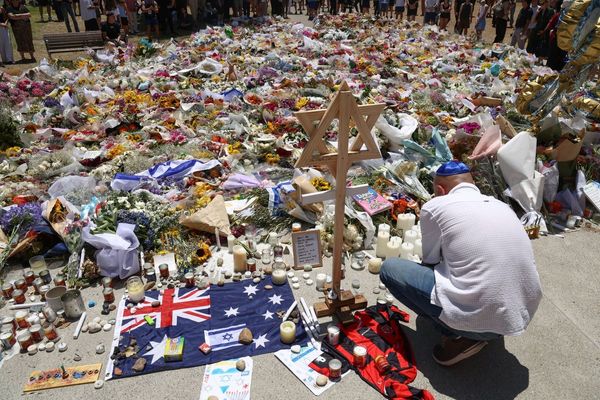The intrusion of a significant number of Russian drones over Poland last week was already focusing minds in Nato, not least on the thorny question of where it draws its “red lines”, when another such incursion took place at the weekend.
Last Wednesday, 19 Russian drones were found to have crossed over into Polish airspace, some having travelled hundreds of miles inland, before a handful were shot down by local and Nato aircraft. It marked an unsettling escalation of tensions between Russia and Europe, and prompted Poland’s prime minister to declare military conflict on the continent “closer than at any time since the Second World War”.
Only a few days later, on Saturday, another drone violated airspace over Romania, dispelling any lingering doubt that Vladimir Putin was testing Europe’s resolve. Two Romanian F-16s were sent to shadow the military craft for about an hour, but did not shoot it down, leaving it to cross back into Ukraine to wreak havoc there.
Ukrainian president Volodymyr Zelensky said the incursion could not be a mistake and was “an obvious expansion of the war by Russia”. Kaja Kallas, the EU’s foreign policy chief, called the incident “yet another unacceptable breach of an EU member state’s sovereignty”. The UK has since summoned the Russian ambassador to explain his country’s actions.
Russia said its drones went astray because they were jammed. For now, Nato has limited its response to “unreservedly condemning these reckless actions”. So what would it take for a member to invoke Article 5, which provides that an “armed attack against one” Nato member “shall be considered an attack against them all”?
In response to Russia’s drone provocations, “Eastern Sentry” has been launched, involving the deployment of equipment along the Nato border with Belarus, Russia and Ukraine to deter potential Russian aggression.
But how Nato intends to act in future is still far from clear. There is a lot of talk about new red lines to hem in Russian aggression. But everyone knows that lines in the sand tend to blow away – Putin’s especially.
Who can forget how President Obama drew a red line in Syria 13 unlucky years ago? Certainly, the Russian president remembers what happened. The White House threatened “severe” but non-specific consequences if the Assad regime used chemical or biological weapons. When that happened, America and its allies backed away, relying on Russia to defuse the crisis by arranging the shipping of Syria’s WMD stockpiles out of the country, but leaving Assad in power until December last year.
This time, with a direct threat to Nato members like Poland and Romania, the West may be gearing up to back strong words about a red line with action. No more blind eyes to drones or cruise missiles “straying” over borders. Perhaps even pre-emptive shoot-downs of potential threats approaching them via non-Nato states such as Ukraine or Belarus, or, in the case of Romania, across the Black Sea.
A tougher turn after more than three and a half years of caution and non-provocation by Nato will reassure the alliance’s Eastern members. But, perversely, Putin might actually welcome the drawing of a thick red line along Nato’s eastern flank.
Defeating Ukraine remains the Kremlin’s priority. Weakening Ukrainian morale, both among civilians and soldiers, is key to Russia’s chances of achieving its goals – especially the strategic minimum of establishing firm control of Ukraine east of the River Dnieper.
The irony of a beefed-up Nato stance along its border is that it removes any ambiguity about where Ukraine lies: in no man’s land.
Given the reluctance of US president Donald Trump and his secretary of war, Pete Hegseth, to state clearly that the US military would defend every inch of Nato territory, a robust definition of what the alliance will do to defend its members and where it will do that would no doubt reassure the Eastern members.
But that’s why a clear red line on Ukraine’s western border could cause a sense of abandonment inside Ukraine. Rather like the Spanish Republic in the 1930s, Ukraine’s dogged defence against an apparently stronger enemy, backed by foreign powers (then Germany and Italy, now China and Iran), has been buoyed by the hope that its forces’ record of holding so much ground would lead to counterintervention by the Western democracies to decide the battle.
The red line could become for Ukrainians a stab in the back – a sense that the West will subsidise them to fight and die but not to win. Weakening Russia’s military and economy through a proxy war may make sense in Washington. Republicans like Senator Lindsey Graham have boasted about how many Russians have died without the loss of a single GI. But if Ukrainian soldiers sense that the real purpose of the war is not the same as their reasons for fighting in defence of their country, then it could undermine that goal.
A Nato red line that covers western Ukraine – at least creating a safe zone for millions of Ukrainians and industry in the west of the country, and securing the route up the Romanian Black Sea coast to Ukraine’s ports in the southwest – will stiffen Ukrainian morale and deter Russian aggression westward from the current fighting zone. That could deter Putin without provoking a full-scale Russia-Nato war that the advocates of a no-fly zone over the whole of Ukraine seem blithely to risk.
Whatever “red line” is drawn, and wherever it sits on the map, it has to be backed up fully. If Putin can test it and find it wanting, things will be much worse than the bad situation Nato is in on its Eastern front now.
Mark Almond is director of the Crisis Research Institute, Oxford
Putin’s gambling that all Nato can launch against him is fearsome rhetoric
Why France’s political crisis spells bad news for Starmer
How Donald Trump’s state visit is a minefield for all concerned
Is Trump’s state visit smart statecraft or a diplomatic disaster?
I’ve cracked the code for securing a second date – buy yourself flowers







